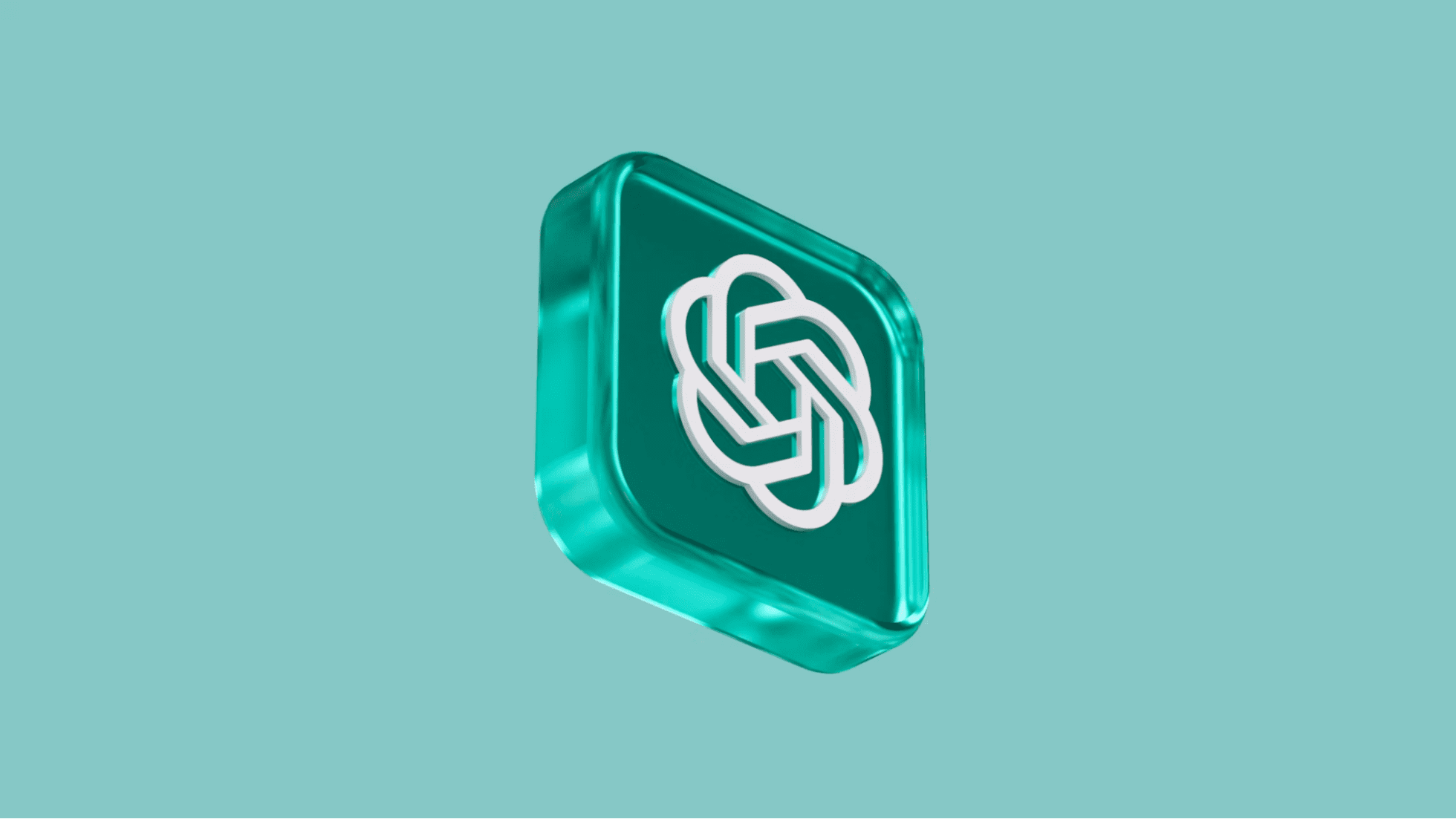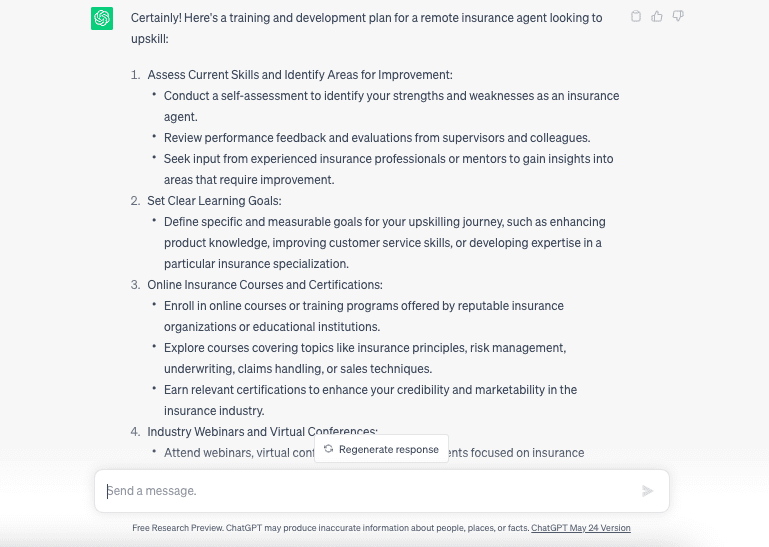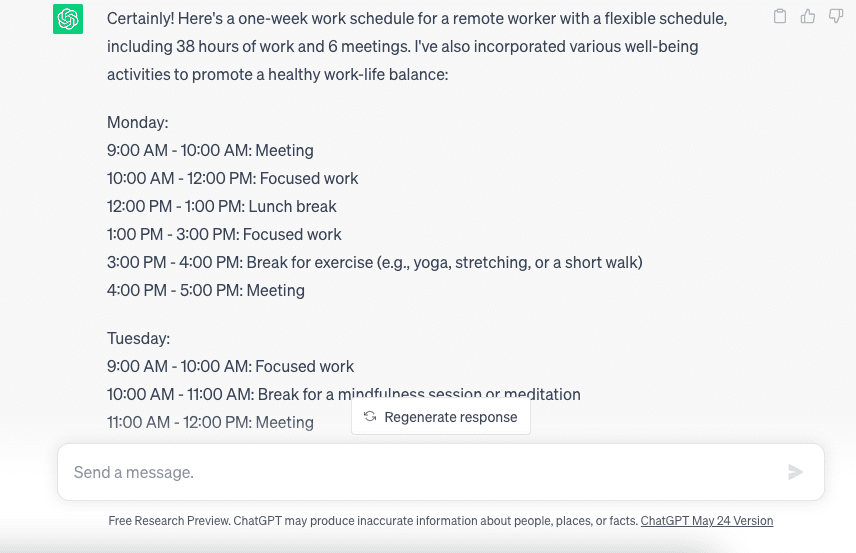Is working from home driving you a bit mad these days? Take heart—help has arrived in the form of an AI bot named ChatGPT. This virtual assistant is here to make remote work not just survivable but actually (gasp!) highly productive and efficient.
Remote work has become widely adopted, with many teams now operating fully or partially distributed. While remote teams provide flexibility and the ability to hire top talent from anywhere, effective collaboration at a distance can be challenging. ChatGPT, an AI assistant bot, helps address many of the communication barriers remote teams face and enables seamless collaboration across time zones and locations.
Remote employees tend to work more than workers who go into an office. Specifically, Airtasker found that, on average, remote workers put in an extra 1.4 days of work every month, which adds up to 16.8 extra days of work every single year compared to in-office employees.
What Is ChatGPT, and How Does It Work?

ChatGPT is an AI chatbot created by our tech overlords at OpenAI to handle natural conversations, dish out helpful info to users, and tackle various workplace tasks so we mere mortals can enjoy more couch time in our pajamas.
At its core, ChatGPT operates by leveraging a massive dataset of diverse textual content. It’s trained to understand language patterns, answer questions, and provide suggestions by analyzing this data. As a result, it can assist remote teams in various tasks, making their workflows smoother and more efficient. Many tools and software solutions have integrated ChatGPT into their products to offer enhanced capabilities too. ChatGPT plugins can also be used to connect ChatGPT to your applications and automate activities.
Here’s a quick rundown of how ChatGPT works:
- Understanding context: The AI model evaluates the input text (questions, statements, or prompts) to comprehend the context.
- Generating responses: Based on its understanding, ChatGPT predicts and generates an appropriate response or suggestion.
- Refining output: The generated response is fine-tuned to ensure it’s coherent, relevant, and engaging before being sent to the user.
However, the effectiveness of ChatGPT and its plugins and integrations can be significantly enhanced when combined with a robust remote access strategy. A comprehensive strategy can ensure that all team members have secure and reliable access to the tools they need, regardless of their location. With these capabilities, ChatGPT can be a game-changer for remote teams looking to improve their communication and collaboration.
Benefits of Using ChatGPT for Remote Teams
Join us as we delve into the world of ChatGPT and unveil the secrets to its unparalleled impact on remote teams and productivity. We’ll discuss 6 ways remote teams can benefit from ChatGPT:
1. Enhanced Communication and Collaboration
ChatGPT’s AI capabilities ensure smooth communication between team members, regardless of geographical constraints. By providing instant translations, clarifying instructions, and summarizing lengthy discussions, it bridges the gap between various collaborators.
ChatGPT can also provide valuable insights on how to manage employees effectively, helping managers foster a positive and growth-oriented work environment, by offering suggestions for communication strategies, feedback methods, and fostering a positive work environment.
ChatGPT and other AI tools offer significant benefits for enhancing communication and collaboration between remote team members. By facilitating regular check-ins, sharing process updates, and streamlining cross-time zone cooperation, ChatGPT helps address the communication gaps that emerge from online work. It can also suggest useful frameworks for ideation and feedback as well as automate logistics for meetings and video calls. Over time, ChatGPT develops insights into team dynamics and provides tailored recommendations for improving interactions and overcoming friction.
With ChatGPT supporting communication and logistics, remote team members can devote more energy to the engaging discussions and deliberation that drive progress. They spend less time on administrative tasks and more time interacting around the thoughtful, challenging work that inspires innovation.
Although virtual teams already benefit from expanded access to talent and resources, tools like ChatGPT enhance their potential by enabling cooperation that is both highly productive and deeply human.
2. Boosting Productivity and Efficiency
Let’s face it—managing time and staying on top of tasks can be challenging, especially in a remote setting. ChatGPT comes to the rescue by assisting team members with prioritizing tasks, setting deadlines, and offering reminders to ensure nothing falls through the cracks.
Moreover, the AI-powered chatbot can quickly draft emails, generate reports, and provide real-time assistance on various topics, saving precious time and increasing overall efficiency.
While AI and automation generate productivity and efficiency gains, the human element remains essential for sustained success in any organization. Creativity, judgment, emotional intelligence, and complex problem-solving are skills that artificial intelligence cannot easily replicate.
Remote teams achieve maximum productivity by using ChatGPT and other AI tools to streamline and optimize repetitive work, then applying human talent to initiatives that truly drive organizational excellence and progress.
3. Personalized Learning Paths and Resources
ChatGPT can create custom learning plans for remote workers. It looks at each person’s skills, interests, career goals, and job. It studies their performance reviews, workload, and conversations. This helps ChatGPT understand what each worker can do, what they want to learn, and their hopes for the future.

ChatGPT can then suggest an educational path for each worker. It recommends online classes, video lessons, mentorship opportunities, and new work projects. These resources help workers improve their skills and work toward promotions or other positions they want.
Over time, ChatGPT watches how workers follow its recommendations. It uses this information to improve and tailor learning paths to each worker’s needs. ChatGPT acts as a personal coach for every worker. It gets to know them, sets custom goals for them, and helps them gain education and experience that matches what they want for their career and what the company needs.
However, to fully leverage the capabilities of ChatGPT for remote workers, it’s essential to have the right remote access devices in place. These devices ensure that you can connect to your work environment securely and reliably, enhancing the effectiveness of AI tools like ChatGPT.
4. Cost Savings and Other Financial Benefits
ChatGPT offers substantial cost savings and financial benefits for remote teams. By automating customer service responses and repetitive tasks, ChatGPT decreases staffing needs and expenses. It can also streamline recruiting and onboarding to minimize ramp-up time and training costs per employee.
Moreover, ChatGPT can provide valuable insights for SaaS product development, analyzing market trends and customer preferences to guide the decision-making process and optimize product features and functionalities. With its data-driven recommendations, ChatGPT can contribute to cost-effective and successful SaaS product launches.
With insights into resource allocation, ChatGPT helps identify where to optimize budgets for maximum impact. Higher employee satisfaction and retention further increase cost savings, especially for large or specialized teams.
Moreover, ChatGPT can also assist in making crucial business decisions, such as purchasing a domain name. By analyzing the company’s brand, target audience, and industry trends, ChatGPT can provide insightful recommendations on the most suitable domain names available on platforms and help the company buy domain names that will enhance a company’s online visibility and credibility, contributing to cost-effective marketing and branding strategies.
5. Supporting Employee Wellbeing
ChatGPT takes over dull and repetitive tasks for remote teams. It can offer advice to help remote workers avoid getting burnt out from long hours and constant availability. It tells them to take regular breaks. It suggests things like exercise, yoga, or calling a friend. It plans team workshops on work-life balance. While tech alone can’t make rules, AI helpers like ChatGPT offer useful tips to support balance.

ChatGPT does boring jobs and streamlines productivity, so remote teams can excel in a sustainable way. Workers don’t lose time for relationships and purpose because of tedious tasks. With AI on routine work, job needs, and wellbeing come together by focusing on what matters most.
ChatGPT also pushes team members to take breaks and practice self-care for better work-life balance. By boosting employee wellbeing, ChatGPT helps keep a positive and productive remote work environment.
6. Create Customer Service Response Templates
When it comes to customer service, consistency and efficiency are key. ChatGPT can help remote teams create a set of response templates that streamline the support process while maintaining a personalized touch. By using AI-powered suggestions, customer service agents can save time and focus on more complex issues.

For example, ChatGPT can answer simple questions about business hours, product specifications, shipping times, and more. It can also handle password resets, update customer information, process returns or cancelations, and make suggestions based on a customer’s order history. For more complex issues, ChatGPT transfers the customer to a human agent with the proper expertise and context to resolve the situation.
According to a case study, a remote customer service team gained a 30% increase in customer satisfaction scores after implementing ChatGPT. The AI tool handled around 60-70% of inquiries without human intervention, leaving human agents with more time and energy to focus on high-value and empathetic work. Customers reported faster, more consistent responses and a better overall customer service experience.
Final Verdict
While AI and automation are transforming work, human capabilities remain irreplaceable. The key is using tools like ChatGPT to augment human potential, not replicate it. For remote teams, ChatGPT enhances efficiency, reduces costs, and improves work-life balance. However, technology alone cannot achieve meaningful progress.
True potential emerges when human talent and purpose guide how AI serves and shapes the future. By automating routine tasks, people gain the freedom to pursue work that ignites imagination and relationships. Cost savings become a means to empower colleagues and fuel their growth. Progress transcends metrics to embrace purpose and personal fulfillment.
It’s important to consider the balance between privacy and security in the digital age. As we increasingly rely on AI tools like ChatGPT, we must also be mindful of the potential risks and challenges associated with data privacy and security. Understanding these concepts is crucial for remote teams using AI tools, as it allows them to better protect their data and maintain trust within their organizations.





